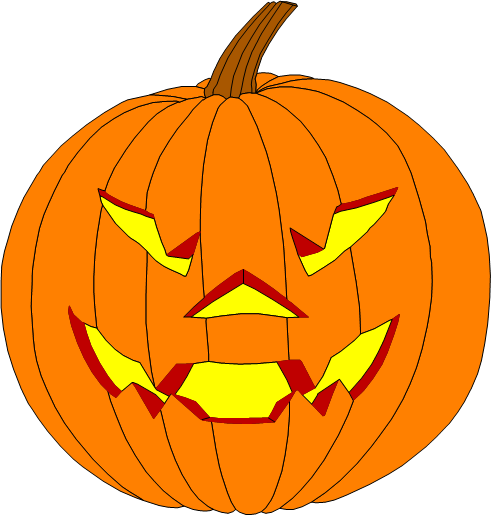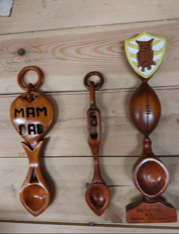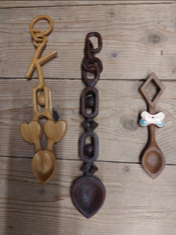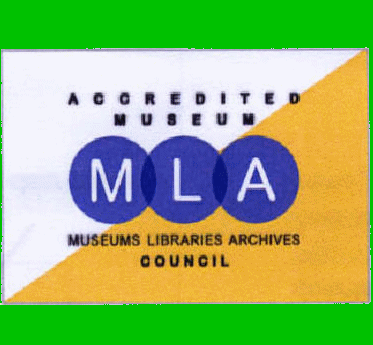Dates for your Diary
6th Oct 8pm Comedian, Stephen Bailey £15
11th Oct 7.30pm Comedy Play, The Adventures of Sherlock Holmes
19th Oct 7.30pm Ransack Dance Us & Them £10
20th Oct 7.30pm Carwyn £14
25th – 28th Oct 7pm Ghost The Musical £14
Every Mon 18th Sep to 18th Dec at 10.30am £4
Shiny Happy People (Parent & Toddler group)
For more information visit or Tel 01495 533195
Museum Opening Times
The Museum is open to the public, free of charge:
Thursday* to Saturday 10am – 1pm
Halloween Festival
 The museum will be open 3-5pm on Tuesday 31st October to coincide with the town’s Halloween Festival. The museum will be hosting face painting as well as a pumpkin hunt. So don your best witches hat and cloak and come along for an afternoon of ‘spooktacular’ fun. And if you can’t make the 31st, our pumpkin hunt, as well as our Pokemon Hunt, will also be operating Sat 28th Oct, Thu 2nd Nov, Fri 3rd Nov and Sat 4th Nov (all 10-1pm), 50p per child.
The museum will be open 3-5pm on Tuesday 31st October to coincide with the town’s Halloween Festival. The museum will be hosting face painting as well as a pumpkin hunt. So don your best witches hat and cloak and come along for an afternoon of ‘spooktacular’ fun. And if you can’t make the 31st, our pumpkin hunt, as well as our Pokemon Hunt, will also be operating Sat 28th Oct, Thu 2nd Nov, Fri 3rd Nov and Sat 4th Nov (all 10-1pm), 50p per child.
Winterfest/Christmas Fayre
Saturday 2nd December 10am – 5pm
The museum will be open from 10am as usual though Winterfest officially starts at 12 noon. Any donations of tins, bottles, chocolate bars, toiletries, bric-a-brac, toys, handicrafts, raffle prizes and items for our Christmas hamper, would be very gratefully received! In fact we are happy to receive most things except for books, DVDs and CDs. Please bring to the museum at your earliest convenience.
September 100 Club
This month’s prize numbers were drawn by member Gaynor Tucker and the lucky winners are:-
No 67 Sharon Saunders £20
No 48 Colin Ewers £10
If you would like to join our 100 club and be in with a chance of winning, it costs just £1 a month. Ask at the museum for further details.
AGM
Our AGM will be held this year on 17th November at 10.30am. It is open to anyone to attend though only paid up members will be eligible to vote. Voting slips will be sent out shortly.
Welsh Love Spoons
We have all seen the wonderfully carved Welsh  Love spoons in shops for many tourists to buy and take home either as gifts or as an ornament for their own home but have you ever wondered if they know the origin of these spoons.
Love spoons in shops for many tourists to buy and take home either as gifts or as an ornament for their own home but have you ever wondered if they know the origin of these spoons.
It was not a custom confined to Wales but in many countries across Europe too especially those with Celtic influence. Centuries ago rough tools were made to use for eating, these gradually became spoon shaped and as mostly carved by the men and boys simple spoons soon became more intricate especially during the long winter months. As time passed different sized spoons became used for cooking and eating and were found to be very useful around the home. Boys soon learnt that making intricate and meaningful were a way to attract the girl of his desire, and whereas today they might buy flowers or chocolates a spoon was given as a token of love. Accepting a gift of a spoon would start the courtship or relationship and the early meaning of the word ‘spooning’.
In time finding a husband with great practical skills was found to be very desirable as other in items for the home could also be made from the skill of wood carving. No other country of the world produced such a variety of designs and carving techniques and as W
As Wales at this time was a poor society and expensive gifts and jewellery not affordable, the more time and thought in the creations the deeper the love it was considered. Each symbol or motif carved held a different meaning and as many young men were shy about showing their true feelings and thoughts the use of these became like spoken words for them.
So what did the symbols mean –
Bell – wedding, anniversary, being together in harmony
Ball in a cage – love held safe, the number of children desired
Birds – love birds – let’s go away together, make a nest
Chain- a wish to be together or number of children depending on links
Cross - God bless us, bound together in Christ’s eyes
Diamond – wealth or good fortune
Heart – love
Horseshoe – Good luck
Key/keyhole – security, I will look after you
Knot/Celtic knot work – eternal love, together forever
 Twisted stem – two lives become one, togetherness
Twisted stem – two lives become one, togetherness
Dragon – protection or symbol of Wales
Many you may see today in shops have been machine made, but the originals are much more desirable and made with many hours of patience and love.
Here are a few of the collection from ones my husband made as a hobby – all by hand. The one with ‘K’ is the first he made as surprise Christmas present for me around 35 years ago!
Karen Pratley
Welsh Place Names And Their Meanings
Have you ever wondered the origins or meanings of the Welsh place names we have? On a recent clear out I found a book with the translations (according to their research) of Welsh place names and I thought it would be interesting to test their theories on some local areas. Just remember over the years many have changed spellings and pronunciations from their original form.
Here are just a few I have picked for local interest…
Aber is one of the most popular prefix for Welsh place names, and with the weather of this summer it seems very appropriate as it means small stream or confluence of streams/rivers. After all the rain we’ve had there must be plenty of these running strong this year.
Aber – so Abertillery, Aberbeeg, Abersychan must be places where two lots of water meet?
Blaen – source of the river as we have at Blaenafon,
Bryn – a hill, hence Brynithel, Brynmawr, Brynhyfryd
Clydach – a rocky stream
Coedcae – land with small trees usually at bottom of a mountain
Cwm – a shallow valley and we find Cwm, Cwmtillery
Dyffryn – valley of a river
Hafod – summer pasture – so maybe Hafodrynys, Hafodarthen – places to take animals in summer for good pasture?
Llan – an enclosure for prayer, such as a church, usually followed by the name of a saint. This rings true for me with Llanhilleth but you would think of St Marks in such a prominent position but it is church of St, Hiledd! Can you think of a place with Llan as a start of a place and has it got a church?
Nant – small valley containing a stream, Nanty-Glo, Nanty Groes
Pant – a hollow
Pen – head or top as in Penmaen, Pen-y-Bont, Pen-y-Fan
Pont – a bridge as in Pontypool, Pont-y-Waun – bridge over the pool and bridge of the meadow
Rhiw – hillside – so Penrhiw would be the top of a hillside, as would Penrhiwgarreg
Ty – house, such as Ty Bryn ...house on a hill
And we must not forget the famous –
Llanfairpwllgwyngyllgogerychwyrndrobwllllantysiliogogogoch
Which translates to –
St. Mary’s church of the pool of the white hazel near the rushing whirlpool, St. Tysilio’s church, near the red cave.
Karen Pratley
SCAM ALERT
With Christmas on the horizon, Amazon are warning about scammers targeting Amazon customers. Customers are being targeted by phone, text and email concerning ‘issues’ with their Amazon Prime membership and / or threats to delete or suspend their Amazon account.
Amazon are advising that they would never ask you to verify sensitive data such as account passwords and payment details over the phone or by text and would only do so through their official website (Amazon.co.uk). They have issued the following advice to their customers:
- Only trust Amazon owned channels such as their official website or their mobile app.
- Never pay over the telephone or give Amazon gift card codes to anyone over the phone. They should only be redeemed through the official Amazon website.
- Be wary of false urgency.
For more information or to report something suspicious, use this link
The Korean War
Our museum has an impressive collection of medals and other military items but there is nothing relating to the Korean War. It is often referred to as the 'Forgotten War' despite the fact that almost 60,000 British troops were deployed there, of whom 1,078 were killed and 2,674 were wounded. It was a very bloody war. It ran from 1950 – 1953 and during that time millions of people died in the north and south of the country. Although a peace treaty was signed in July 1953, the war has not actually officially ended and tensions remain high between North and South Korea; two very different countries.
How did the war come about? Japan had occupied Korea since 1910 but they were ousted by Russia during the Second World War. When that war ended, the country was divided along the 38th parallel of latitude with a communist state set up by Russia in the north while in the south the Americans set up a democratic state. The Russians and Americans withdrew in 1949 but tensions were high and when in 1950 North Korea invaded its neighbour to the south, the United Nations Security Council (which the Soviet Union had temporarily left) agreed to send forces to support the south. Those forces were mainly made up of troops from the United States but they were joined by a lesser number of British troops along with forces from many other countries. It seems the decision to deploy British troops was controversial as Britain was already committed to helping the government in Malaysia in its fight against insurgents and had also promised to help the French in Vietnam which were a lot of commitments for a small country but this was the time of the Cold War and fears about the rise of communism.
Among the soldiers was Michael Caine, an infantryman at the time, who wrote of his experiences, including this description "Thousands of Chinese advancing toward our positions, led by troops of demonic trumpet players. The artillery opened up but they still came on, marching toward our machine guns and certain death." Caine later featured in a film about the war made in 1956, entitled 'A Hill in Korea' in which Robert Shaw and Stanley Baker were also listed in the credits.
Some of the British troops taken prisoner in the war had also experienced captivity in the Second World War and you have to wonder how they coped. Conditions were hard with cramped quarters and poor food. Better conditions were promised to those soldiers willing to become part of the communist propaganda machine and many understandably took up that offer. The 'brain-washing' to which they were subjected was something which came under scrutiny when they returned home and some regard it as the start of the use of such techniques on prisoners of war.
It would seem that very many years elapsed until a memorial was built to those who took part in the Korean War. My understanding is that the first memorial was erected in Scotland and the website says that it is the only memorial in the UK that lists all the names of those killed. It comprises an arboretum of 1,100 native Scottish trees, two mounds in the shape of Ying and Yang and between the mounds a shrine in typical Korean style; the shrine is where the names are inscribed. The memorial was created by the Lothian and West of Scotland Branch of the British Korean Veterans Association and the dedication ceremony took place in 2000. There is also a memorial to the Korean War in Victoria Embankment Gardens in London, comprising a bronze statue of a British soldier gifted by the Republic of Korea in 2014, to honour the British troops who served in the war and you can find a memorial at the National Memorial Arboretum near Litchfield. - the memorial here takes the form of a Garden of Remembrance within which sits a rock carrying a plaque.
It has been interesting looking up information on the Korean War but it has all come from the internet. If you know anyone with Abertillery connections who was involved in this conflict, we would be pleased to hear from you.
Jen Price
Top Of Page
© Abertillery & District Museum 2023 
